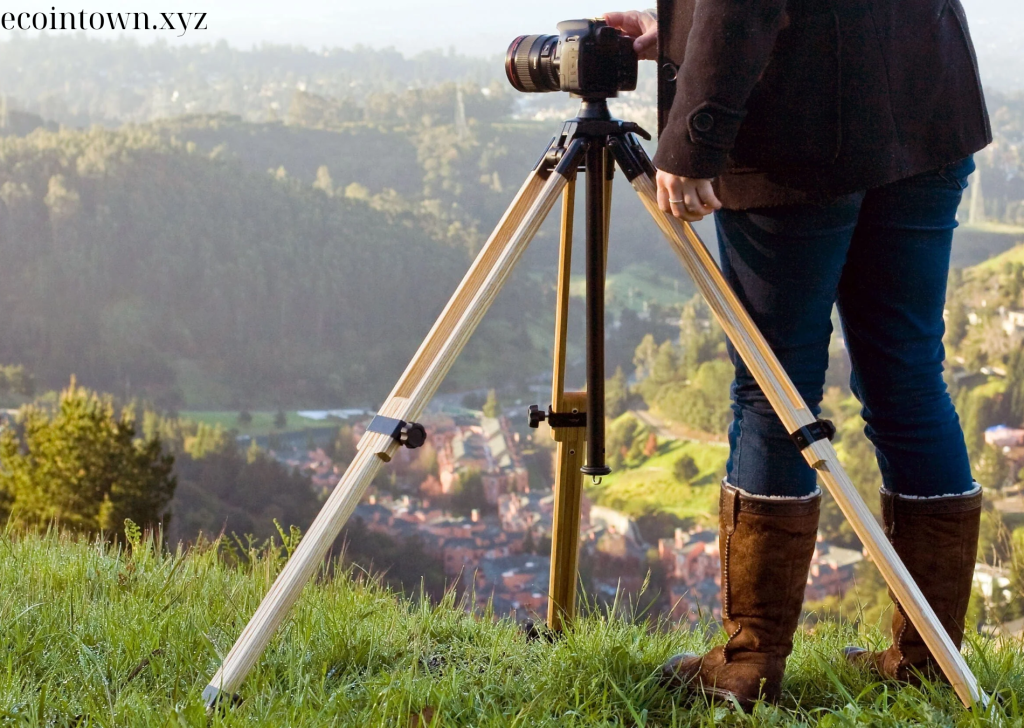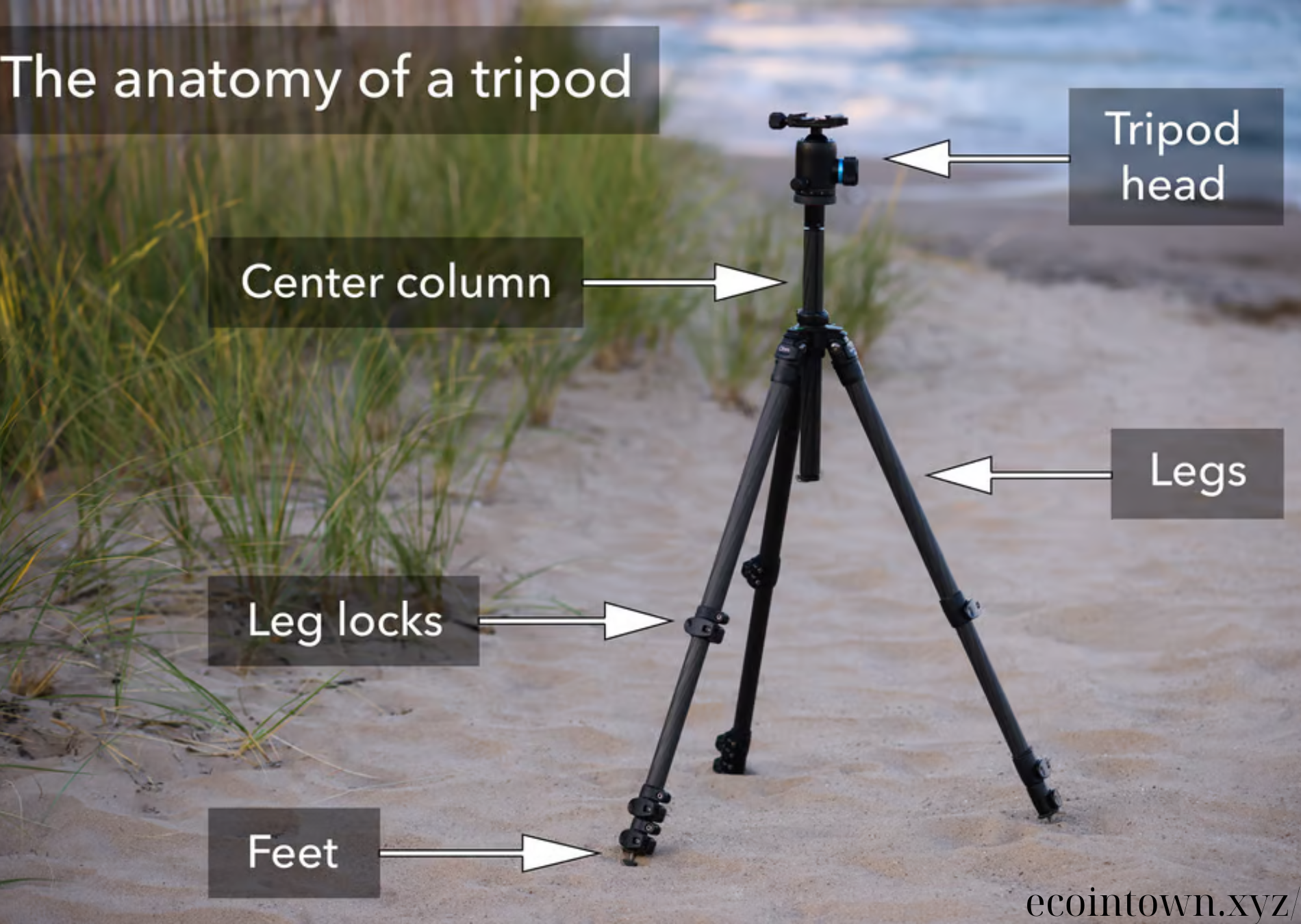When it comes to capturing perfectly framed and sharp images, a tripod is an indispensable tool for photographers of all levels. However, not all tripods are created equal, and some advanced features can make a significant difference in your photography. In this guide, we’ll explore the tripod features you might not be aware of but absolutely need to take your photos to the next level.

Table of Contents
ToggleKey Highlights
- Introduction to Tripod Features: Why they matter for sharp images.
- Must-Have Features: Hidden gems that improve stability and framing.
- Specialized Accessories: Enhance tripod functionality for better results.
- Choosing the Right Tripod: Factors to consider for your photography style.
- Tips for Using Tripod Features: Maximizing the potential of advanced tripod capabilities.
1. Introduction to Tripod Features: Elevating Your Photography
A tripod is more than just a stand for your camera. With the right features, it can transform your photography, providing stability, precision, and ease of use in various shooting scenarios. Whether you’re a landscape photographer, a portrait artist, or a videographer, knowing what to look for in a tripod can help you achieve perfectly framed and tack-sharp images every time.
Why Pay Attention to Tripod Features?
- Stability: Reduces camera shake and ensures crisp images, especially in low light.
- Precision: Allows for fine adjustments in framing and composition.
- Versatility: Adapts to different shooting conditions and styles with the right features.
2. Must-Have Features: Hidden Gems for Better Photography
Here are some lesser-known but essential tripod features that can elevate your photography and help you capture perfectly framed and sharp images:
Multi-Angle Center Column
A multi-angle center column allows the column to be positioned at various angles, making it easier to shoot from different perspectives. This feature is ideal for macro photography, overhead shots, or low-angle compositions that are hard to achieve with a standard tripod.
- What It Does: Adjusts the center column to multiple angles for unique perspectives.
- Best For: Macro photography, creative angles, and overhead shots.
- Pro Tip: Use the multi-angle feature to capture ground-level shots without having to lie on the ground.
Bubble Level Indicator
A bubble level indicator is a small but crucial feature for ensuring your camera is perfectly horizontal. This feature is essential for landscape photographers who want to avoid tilted horizons and achieve perfectly level shots.
- What It Does: Indicates whether the camera is level for perfectly aligned shots.
- Best For: Landscape photography, architectural photography, and panorama shots.
- Pro Tip: Choose a tripod with multiple bubble levels for better accuracy when working on uneven terrain.
Quick-Release System
A quick-release system allows you to attach and detach your camera from the tripod quickly and securely. It’s a feature that’s often overlooked but can save you time, especially when switching between handheld and tripod shots in dynamic shooting environments.
- What It Does: Enables fast camera attachment and removal with a secure locking mechanism.
- Best For: Event photography, wildlife photography, and time-sensitive shoots.
- Pro Tip: Look for an Arca-Swiss compatible quick-release system for greater compatibility with various camera brands and accessories.
Center Column Hook
A center column hook is a small but powerful feature that enhances tripod stability. By attaching a weight (such as your camera bag) to the hook, you can increase the tripod’s stability, especially in windy conditions or when shooting with a heavy lens.
- What It Does: Improves stability by allowing you to hang a weight from the tripod.
- Best For: Outdoor photography, long exposures, and shooting in windy conditions.
- Pro Tip: Use a sturdy camera bag or a sandbag for extra weight to reduce vibrations during long exposures.
Leg Angle Adjustment
Leg angle adjustment allows you to set each tripod leg at different angles, making it easier to stabilize the tripod on uneven ground. This feature is invaluable for outdoor and nature photographers who frequently encounter challenging terrain.
- What It Does: Adjusts the angle of each leg for stability on uneven surfaces.
- Best For: Landscape photography, nature photography, and shooting on rocky terrain.
- Pro Tip: Use the widest leg angle setting for maximum stability when working close to the ground.
Reversible Center Column
A reversible center column lets you invert the column, allowing the camera to hang upside down. This is particularly useful for macro photography, enabling you to get closer to the ground for detailed close-ups of small subjects.
- What It Does: Inverts the center column for low-angle and macro shots.
- Best For: Macro photography, flat-lay photography, and low-angle shots.
- Pro Tip: Combine the reversible column with a macro lens for stunning close-up images with incredible detail.
Detachable Monopod
Some tripods offer a detachable leg that converts into a monopod. This feature provides versatility, allowing you to switch between a stable tripod setup and a lightweight monopod for increased mobility.
- What It Does: Converts a tripod leg into a monopod for added flexibility.
- Best For: Wildlife photography, sports photography, and travel.
- Pro Tip: Use the monopod for quick and stable shots in crowded or fast-paced environments where a tripod may be too bulky.
3. Specialized Accessories: Enhancing Tripod Functionality
To make the most of your tripod’s features, consider adding some specialized accessories that can enhance its capabilities:
- Panoramic Head: A panoramic head allows for smooth and precise panning, perfect for creating stitched panorama images or videos.
- Lens Collar: A lens collar provides added stability for heavy telephoto lenses, ensuring that weight is evenly distributed on the tripod.
- Extension Arm: An extension arm allows you to extend the camera away from the tripod’s center, providing better angles for overhead shots or product photography.
- Spike Feet: Replaceable feet with spikes are ideal for outdoor photographers who need extra stability on soft or uneven ground.
- Remote Shutter Release: Reduces camera shake during long exposures by allowing you to trigger the camera without touching it.
4. Choosing the Right Tripod: Factors to Consider
Not all tripods are created equal, and the right choice depends on your specific photography needs. Here are some factors to consider when choosing a tripod:
Weight and Portability
If you’re a travel photographer, look for a lightweight carbon fiber tripod that’s easy to carry. For studio work, a heavier aluminum tripod may provide more stability.
Load Capacity
Ensure that the tripod can handle the weight of your camera and heaviest lens. Always choose a tripod with a higher load capacity than you think you need to account for accessories.
Height Range
Consider the minimum and maximum height range of the tripod. A tripod with a low minimum height is great for macro work, while a tall maximum height is useful for shooting from eye level or higher.
Head Type
Tripod heads come in different styles—ball heads for quick adjustments, pan-and-tilt heads for precise movements, and geared heads for maximum control. Choose the one that fits your shooting style.
5. Tips for Using Tripod Features: Maximizing the Benefits
Using a tripod effectively requires understanding its features and how to apply them in real-world scenarios. Here are some practical tips:
Stabilize for Long Exposures
Use the center column hook to stabilize the tripod during long exposures, especially when shooting at night or in windy conditions. The added weight minimizes vibrations, resulting in sharper images.
Use the Bubble Level for Panoramas
When creating panoramic shots, make sure your camera is perfectly level by using the bubble level indicator. This ensures seamless stitching of images in post-processing.
Adjust Leg Angles for Low-Angle Shots
Take advantage of leg angle adjustments to lower the tripod to the ground for unique perspectives. This technique is great for creative landscape shots and low-angle portraits.
Experiment with Different Tripod Heads
Try different tripod heads to find what suits your style. A ball head offers speed and flexibility, while a pan-and-tilt head provides precise control over composition.
Conclusion
Choosing the right tripod features can make a huge difference in the quality of your photos. From multi-angle center columns to quick-release systems and detachable monopods, these advanced features allow you to frame images with precision and ensure they remain sharp in any condition. Whether you’re shooting landscapes, portraits, or macro subjects, a well-equipped tripod can elevate your photography, giving you the stability and control you need to capture stunning visuals. With the right gear and techniques, you can unlock the full potential of your camera and take your photography to the next level.
FAQ
What is the purpose of a multi-angle center column on a tripod?
A multi-angle center column allows for creative shooting angles, making it easier to capture overhead shots, macro images, and low-angle compositions.
How does a quick-release system benefit photographers?
A quick-release system makes it faster and easier to attach or detach your camera from the tripod, ideal for switching between handheld and tripod shots.
Why is a bubble level important on a tripod?
A bubble level helps ensure your camera is perfectly horizontal, preventing tilted horizons and ensuring well-aligned shots.
What is the advantage of having a detachable monopod on a tripod?
A detachable monopod provides flexibility, allowing photographers to switch between stable tripod setups and lightweight, mobile monopod shooting.
How can I stabilize my tripod in windy conditions?
Use the center column hook to hang a weight (like a camera bag) from the tripod, increasing stability and reducing camera shake during windy conditions or long exposures.
